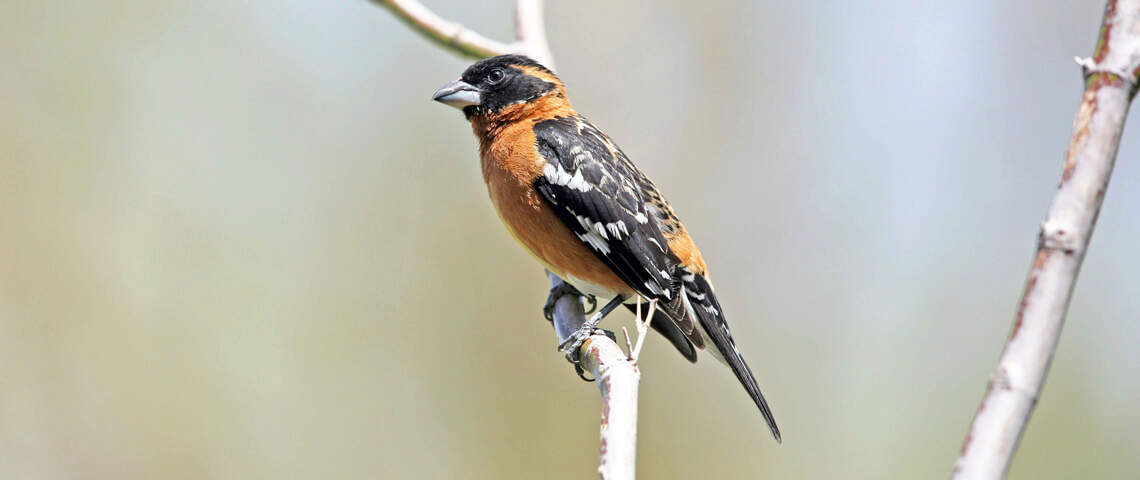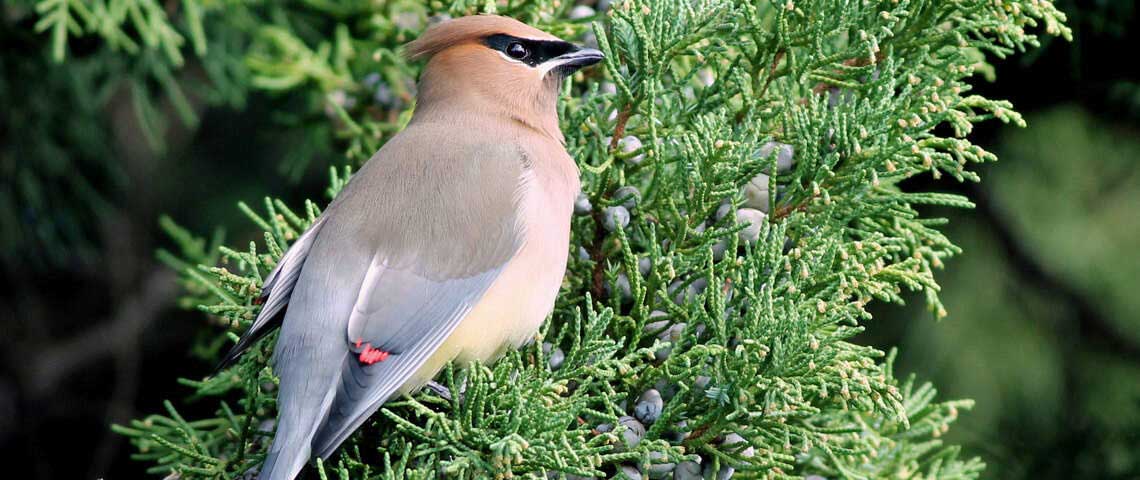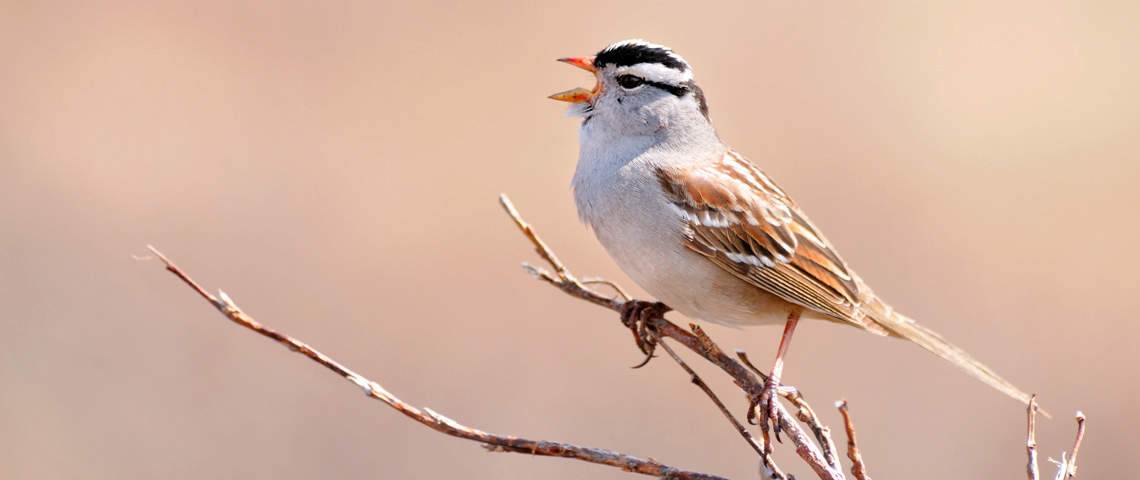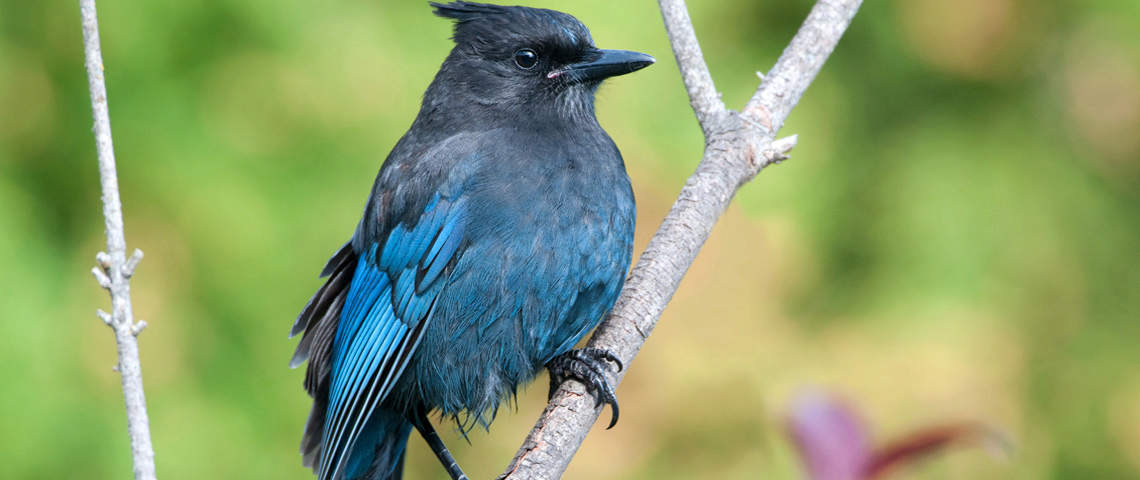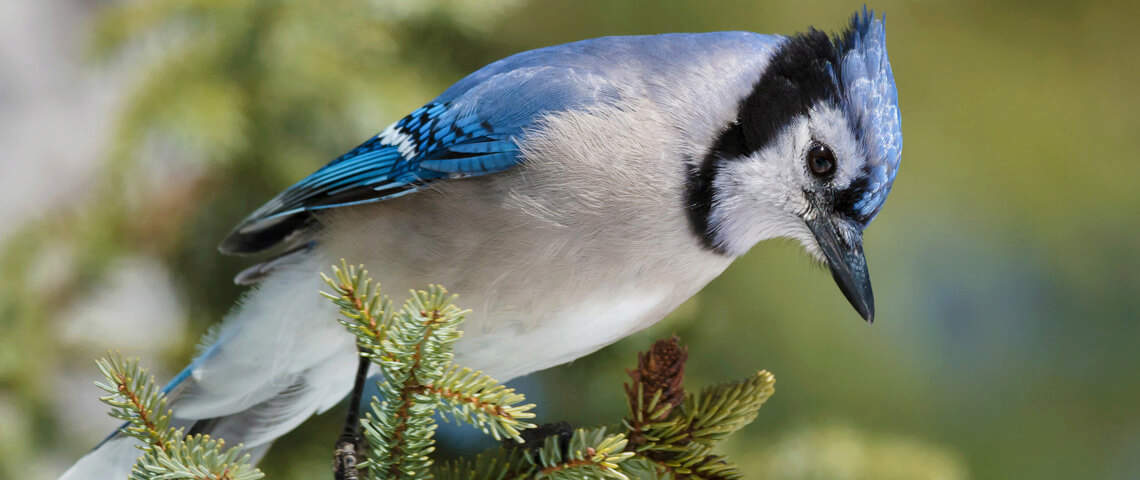Featured Birds: Rose-breasted and Black-headed Grosbeaks
As the signs of spring grow more frequent we get hungrier for more. When will the first hummingbird arrive? The first oriole? And right up there with those two big arrivals is the first Rose-breasted Grosbeak, for people in the East, and Black-headed Grosbeak for those in the West. These handsome birds with the oversized bills are members of the cardinal family.
Like cardinals, they have a rich, melodic song. Unlike cardinals, the songs of both have been likened to a robin with a sore throat or a robin that’s had operatic voice training, depending on how the listener interprets the rich huskiness of the sweet tune.
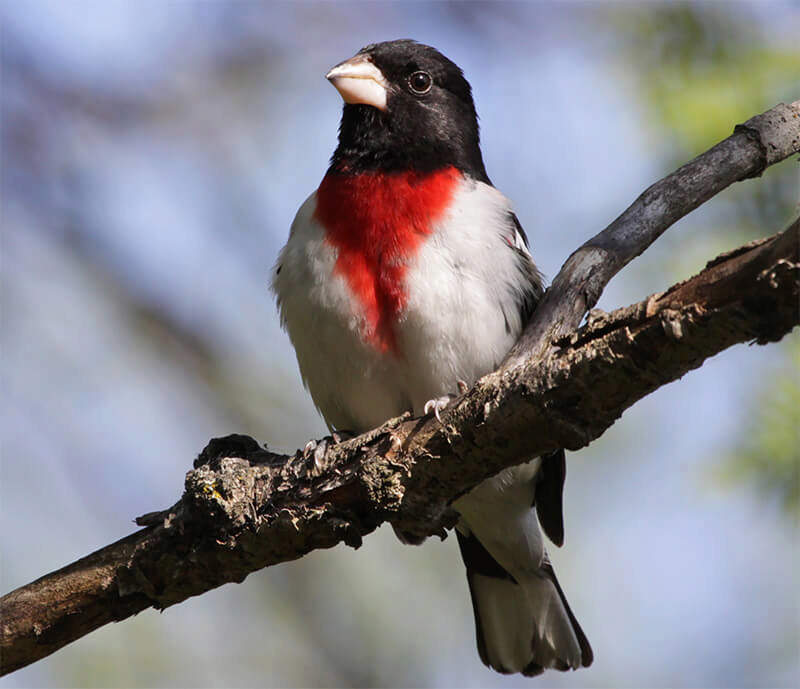
Male Rose-breasted Grosbeak
The Rose-breasted Grosbeak is bizarrely yet strikingly beautiful with the brilliant red on the upper breast giving it the nickname “cutthroat.” Black-headed Grosbeak plumage is more subdued.
Both species live up to the “grosbeak” name with their enormous, conical bill, effective at cracking shells of sturdy seeds and nuts. They also feed heavily on fruits and insects.
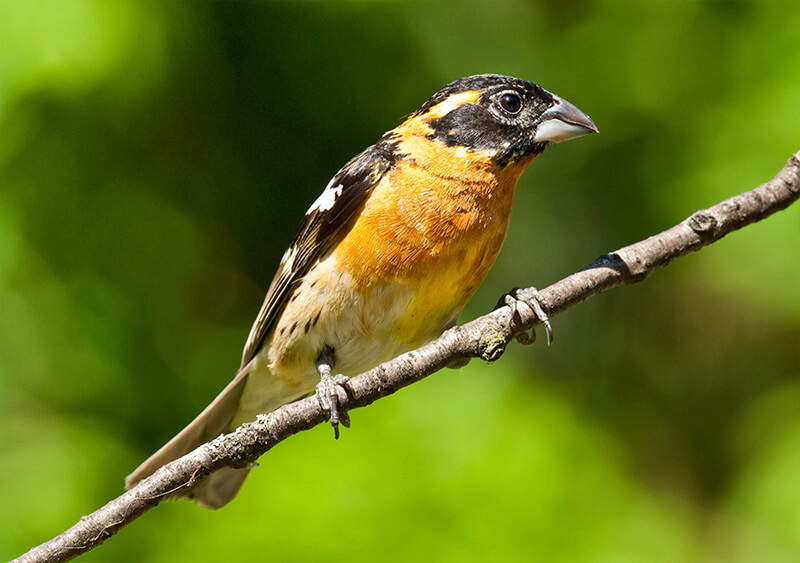
Male Black-headed Grosbeak
On their wintering range in Mexico, Black-headed Grosbeaks often eat monarch butterflies. Mexico is where millions of monarchs also spend the winter, but only a few animals have developed strategies allowing them to eat these butterflies, because monarch bodies produce a powerful toxin. Black-headed Grosbeaks can deal with the toxins as long as they don’t eat them too frequently, and so after gorging on them for a day, they take roughly a week off to eliminate the toxins before eating more. Rose-breasted Grosbeaks migrate beyond Mexico, so haven’t developed strategies for eating such toxic critters.
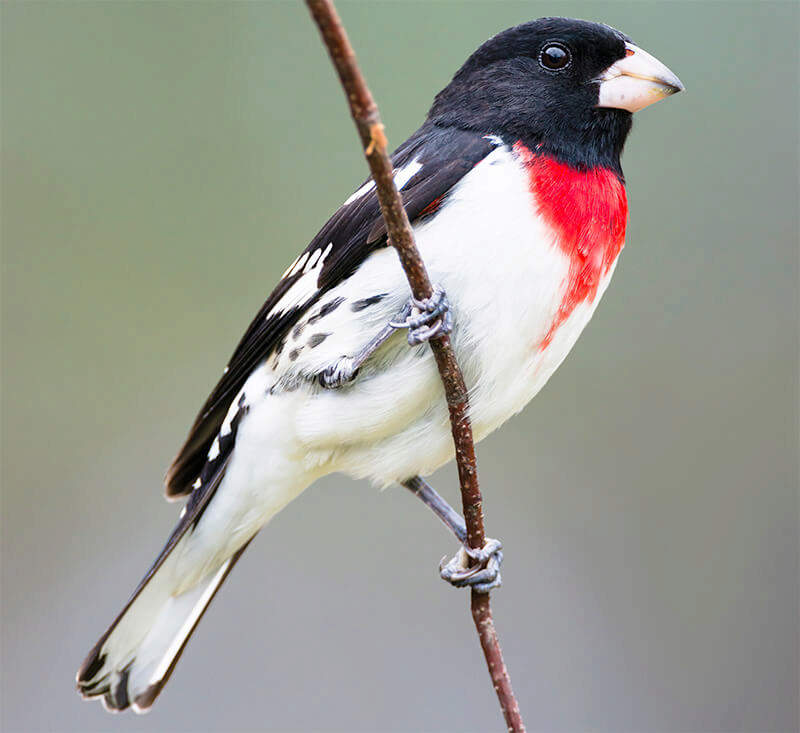
Both grosbeaks are accepting of other grosbeaks nine months of the year. But as soon as they arrive on their breeding grounds in spring, they become powerfully territorial, each pair wanting its own piece of real estate for raising its young. Unlike most songbirds, the females sing as well as the males, and most peculiarly, both sexes sometimes sing while on the nest, incubating eggs or brooding nestlings!
Both grosbeaks visit feeders, especially for sunflower seeds.

